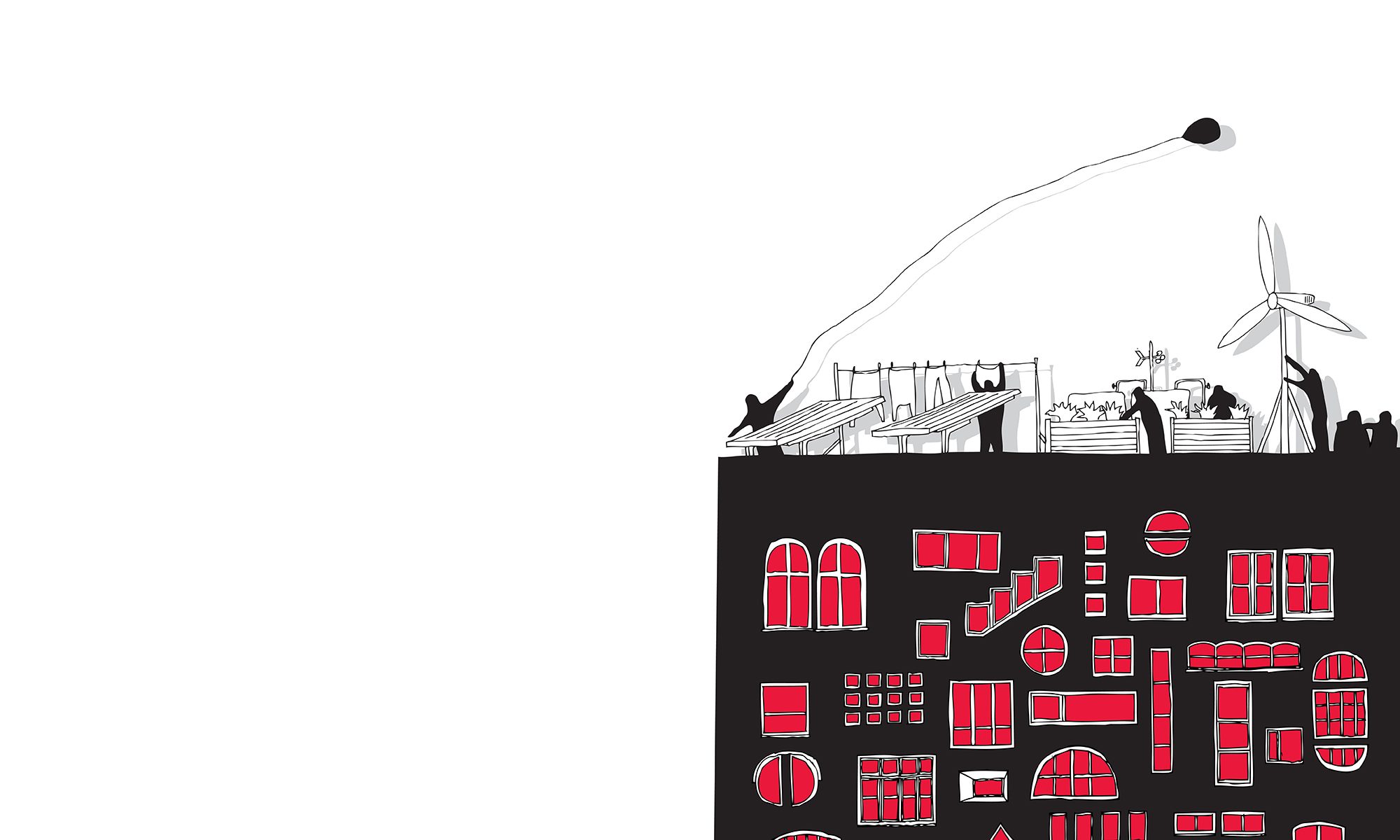The Pametnija Zgrada (Smarter Building) model puts affordability of housing first while taking away the pressure from individuals in resolving their housing condition. It is centred around a cooperative of inhabitants that collectively develops, builds, finances, maintains and operates a multi-apartment building. Because it manages this entire life-cycle (without the aim to gain profit), the resulting apartments are much more affordable for the residents.
The cooperative owns the real-estate as well as takes on the necessary loans for its construction. Participating households or individuals (the members of the cooperative) thus collectively own their building. And keep it there, because individual members or households cannot speculate with their apartment – in that way it is not just a safe and affordable option for the first generation, but for all the following generations of its inhabitants to come.
As a resident of such a building, you pay an entry deposit before moving in, and then monthly payments that contribute to both the loan repayment and running costs (including utilities such as water and electricity). These contributions are set in advance so you will always know what to expect.
Aiming at 2/3 of the market average: lower costs ensure a safe and affordable future.
In short: what makes this approach smarter?
- Collective ownership: the cooperative constructs the building and keeps it in its ownership
- Credit is assumed by the cooperative, taking (part of) vulnerability away from individuals
- Cooperative membership gives access to stable long term housing costs
- Members contribute financially (on a monthly basis) and through economic participation
- Affordable monthly costs ensure that all units are sustainably affordable for their inhabitants
- Common spaces that contribute to the quality of life
- Upon leaving the apartment and the cooperative, the members are refunded the deposit and their monthly contributions in the amount of the loan principal
Smarter Building approach builds on long-standing but neglected traditions of housing cooperatives and self-building in Serbia. And expands them with the experience of other cooperative housing developments developed in the last 20 year. So, while it is new to Serbia and South-Eastern Europe, it has been already tested elsewhere.
